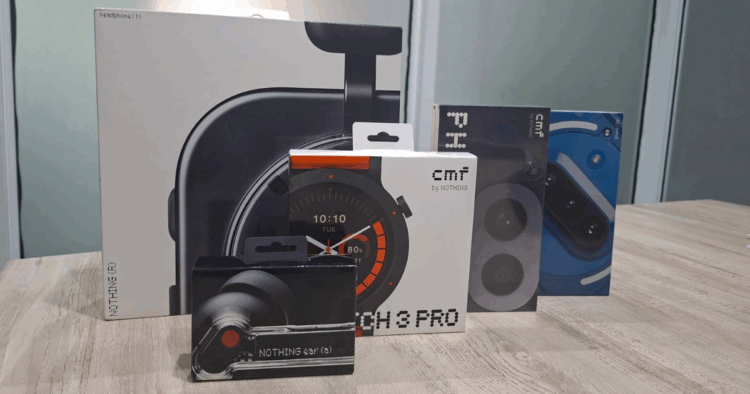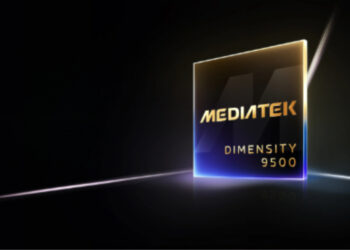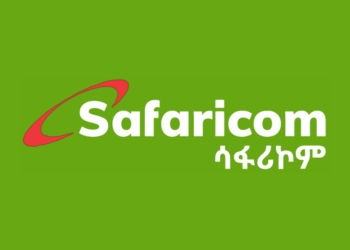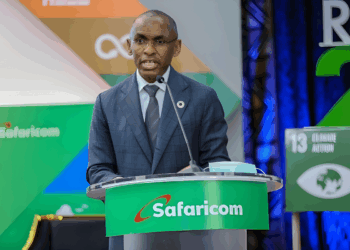The Nothing Brand has emerged as one of the most provocative disruptors in global consumer tech. In a world of cluttered devices and noisy ecosystems, it dares to be invisible—championing radical minimalism, transparent hardware, and a design-first philosophy that defies convention. Founded in 2020 by Carl Pei, the former co-founder of OnePlus, the London-based startup is building an open ecosystem that rivals Apple’s—but with affordability, aesthetic purity, and AI integration at its core.
The buzz is real. The Nothing Phone (2) surpassed 600,000 units sold globally within its first year. In contrast, CMF by Nothing—its budget-friendly sub-brand—has launched in India, the UAE, and Europe, targeting price-conscious markets with fashion-forward tech. But as the Nothing Brand eyes Kenya and Africa, the stakes shift from global hype to local survival.
Kenya’s mobile market is fiercely pragmatic. With smartphone penetration at 60.4% as of 2023 and a youth-driven creator economy, buyers demand more than style—they want durability, support, and value. By December 2024, smartphone penetration in Kenya reached an impressive 80.5%, marking a significant milestone in the country’s digital transformation. A quick snapshot reveals:
- 71.4M SIM cards
- 56.1M mobile broadband users
- 42.3M mobile money users
Can a design-led brand thrive in a market shaped by an innovative, entrepreneurial-driven, boda boda-proof resilience, Safaricom bundles, and offline retail trust?
This is Part 1 of a 3-part deep dive into The Nothing Brand Ecosystem. JuaTech Africa unpacks the vision, the tension, and the test ahead. Because beyond brand lies reality—and Kenya doesn’t play by global rules. Check Next: Part 2 | Part 3
A Growing Ecosystem — Phones, Earbuds, Wearables, and CMF
The Nothing Brand isn’t just launching products—it’s architecting a design-led ecosystem. From transparent smartphones to AI-powered earbuds and fashion-forward wearables, the brand is building a universe where style meets utility. But in Kenya, where value, durability, and local support drive adoption, this ecosystem must do more than look good—it must land with relevance.
Nothing Phone (1), (2), and CMF Phone 1 — Specs, Positioning, Pricing
The Nothing Phone (1), launched in mid-2022, featured a Snapdragon 778G+ processor, a 120Hz OLED display, and the now-iconic glyph interface. Its successor, Phone (2), upgraded to the Snapdragon 8+ Gen 1, retailing globally at $639 (KES ~65,000). While praised for their design and UI fluidity, both models remain premium-tier, limiting their mass-market appeal in Kenya, where sub-$300 devices dominate.
Enter CMF Phone 1—Nothing’s affordability-first pivot. Launched in July 2024, it packs a MediaTek Dimensity 7300, 6.67″ AMOLED display, 50MP camera, and 5000mAh battery. Priced at $199 (KES ~29,500), it’s positioned to compete with Xiaomi’s Redmi Note series and Oraimo’s mid-range offerings. But without local distribution, it risks being a ghost brand.
Ear (1), Ear (2), Ear (Stick) — Design-Led Audio, ChatGPT Integration
Nothing’s audio line blends style and smarts. The Ear (2) introduced ChatGPT integration, adaptive ANC, and LHDC 5.0 support. Yet in Kenya, Oraimo FreePods and Xiaomi Buds dominate due to their superior battery life, competitive prices, and increased retail visibility. Without presence in local tech shops, Nothing’s audio edge remains aspirational.
CMF Watch Pro, Buds Pro — Affordable Entry Points, Fashion-Forward Tech
CMF’s wearables—Watch Pro, Pro 2, and Buds Pro—retail under KES ~10,500), offering AMOLED displays, IP ratings, and ANC. The recently launched Watch 3 Pro retails at around KES 15,000. They’re positioned to rival Oraimo and Xiaomi devices, but lack visibility in Nairobi’s retail corridors and Safaricom outlets. On select outlets have them.
JuaTech Africa | Strategic Insight
The Nothing Brand’s ecosystem is bold, cohesive, and globally admired. But Kenya’s market demands affordable, accessible, and locally supported tech. CMF is the right pivot—but only if distribution, repair networks, and retail trust back it.
Kenya’s Market Realities — What Style Must Confront
The Nothing Brand’s aesthetic rebellion may turn heads globally, but in Kenya, tech must earn its place through grit, value, and local relevance. This market doesn’t reward hype—it rewards resilience.
Price Sensitivity — Mid-Range Dominance, Value-First Buyers
Kenya’s smartphone market is value-first and fiercely price-sensitive. According to the Communications Authority of Kenya (CAK), smartphone penetration reached 61% in 2023, with over 30.8 million smartphones connected to mobile networks. The numbers increased to an encouraging 80.5% by the end of 2024. Yet, over 70% of devices sold fall within the KES 10,000–30,000 range (approximately USD $70–$210), dominated by Tecno, Infinix, Xiaomi, and Samsung A-series devices. Buyers prioritize battery life, camera performance, and storage—not glyphs or glass. While the CMF Phone 1 fits the pricing bracket, its absence from local shelves makes it invisible.
“Specs don’t sell here—trust, price, and practicality do,” notes Moses Kemibaro, founder of Dotsavvy and a respected voice in Kenya’s digital space.
Support & Repair Culture — Trust in Local Shops, Spare Parts, After-Sales
Kenyan buyers expect immediate, walk-in support. Brands like Oraimo, Tecno, and Samsung thrive because they’ve built repair networks, stocked spare parts, and trained technicians across Nairobi, Eldoret, and Mombasa. A cracked Nothing Phone screen or faulty CMF Buds must be fixable within the nearest urban centre or town—not shipped to Dubai. Without local after-sales infrastructure, Nothing risks being seen as disposable.
Retail Channels — Safaricom, Jumia, Tech Shops, Influencer Retail
Distribution is everything. Safaricom’s device financing, Jumia’s flash sales, and assorted tech shops in Nairobi CBD shape buying behavior. Influencer retail—where creators demo gadgets on TikTok and Instagram—drives Gen Z adoption. If CMF isn’t stocked in these channels, it’s irrelevant. Presence equals purchase.
Strategic Tensions
Kenya’s market doesn’t reject style—it demands style that survives. It requires adaptability to the culture and realities around the people targeted. The Kenyan market is unique from the UK or even India. The Nothing Brand must go beyond aesthetics and embed itself in the rhythms of Kenyan tech life. Because here, design is admired—but durability is worshipped.
Can Design-Led Tech Survive the Nairobi Test?
The Nothing Brand’s design-first philosophy is bold, disruptive, and globally admired. But in Nairobi, where tech meets terrain, the question isn’t just how it looks—it’s how it lives. Kenya’s mobile market is a battlefield of distribution, durability, and trust. And design, no matter how elegant, must survive the test of accessibility.
Visibility vs. Accessibility — Glyphs Look Cool, But Can They Be Serviced?
The Glyph interface on Nothing Phones is a visual marvel, featuring LED strips that signal calls, notifications, and charging status. But in Kenya, visibility means something else: retail presence, demo access, and repairability. If a buyer can’t walk into a shop on Moi Avenue, Kenyatta Avenue, or Phoneplace Kenya and see, touch, or fix the device, it doesn’t exist. As of Q3 2025, Nothing has no official retail footprint in Kenya, and CMF products remain unavailable on Safaricom, Jumia, Kilimall, or trusted tech outlets. That’s not just a gap—it’s a strategic blind spot.
Nothing Brand Story vs. Brand Trust — Global Hype vs. Local Credibility
Carl Pei’s narrative—disrupting tech with transparency and minimalism—has earned Nothing global media coverage and cult-like fandom. But in Kenya, brand trust is earned on the ground. Tecno and Infinix didn’t win by storytelling—they won by showing up: in kiosks, bundles, and repair shops. Without local ambassadors, service centers, or creator partnerships, Nothing risks being seen as style without substance.
“It takes more than specs to sell a phone here—it takes trust, support, and presence,” says a senior rep at Phoneplace Kenya.
Xiaomi, keen to capture the Kenyan, East African, and African markets, has been intentional in its strategy implementation. Read our comprehensive article on Xiaomi’s steady rise and increased inroads in Kenya’s Mobile Tech corridors. Over the years, Xiaomi has risen to be a recognised, admired, and respected brand in Kenya. Can Nothing Phone fall suit?
CMF’s Role — Is This the Right Entry Point for Kenya?
CMF by Nothing is the brand’s affordability-first sub-label, with products priced under KES 30,000. On paper, it’s a strategic fit. But without distribution, support, and visibility, CMF risks being a ghost brand. Kenya’s market doesn’t just reward affordability—it demands accessibility, adaptability, and after-sales assurance.
Takeaway | Strategic Tension
Design may spark desire—but distribution delivers trust. For the Nothing Brand to thrive in Kenya, it must transition from being seen to being served. Because here, tech isn’t just admired—it’s lived with, fixed, and passed down.
What Nothing Must Learn to Win in Kenya
The Nothing Brand has captured global attention with its bold design, transparent hardware, and minimalist philosophy. But Kenya’s mobile market is not moved by aesthetics alone. It’s shaped by trust, access, and after-sales assurance. From glyphs to CMF, Nothing’s ambition now faces a grounded reality—where tech must be seen, supported, and serviced.
This is the tension: a visionary brand meets a market that demands execution. Kenya accepts innovation—it requires innovation that shows up. And for Nothing to thrive, it must learn the language of local relevance.
In Part 2 of the Nothing Brand Ecosystem Sequence, we decode the terrain:
- What drives Kenyan buyers?
- How do retail dynamics shape adoption?
- What must global brands understand to earn trust in East Africa’s most competitive tech market?
Read Part 2 → Kenya’s Tech Landscape: What Nothing Must Understand to Win.
“This series is part of JuaTech Africa’s mission to decode global tech through an East African lens—empowering buyers, creators, and retailers with insight, clarity, and strategic foresight.”
Read Part 1 | Part 2 | of the ongoing Deep Dive Series on Safaricom.
















